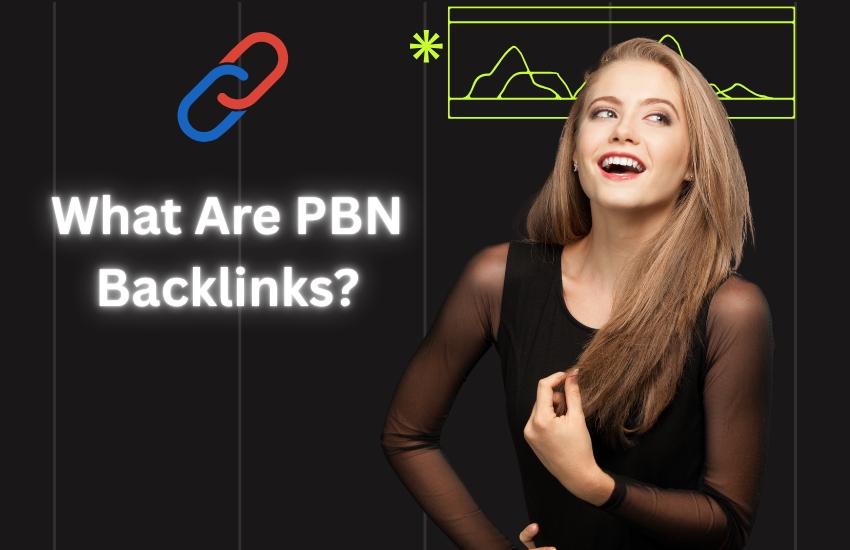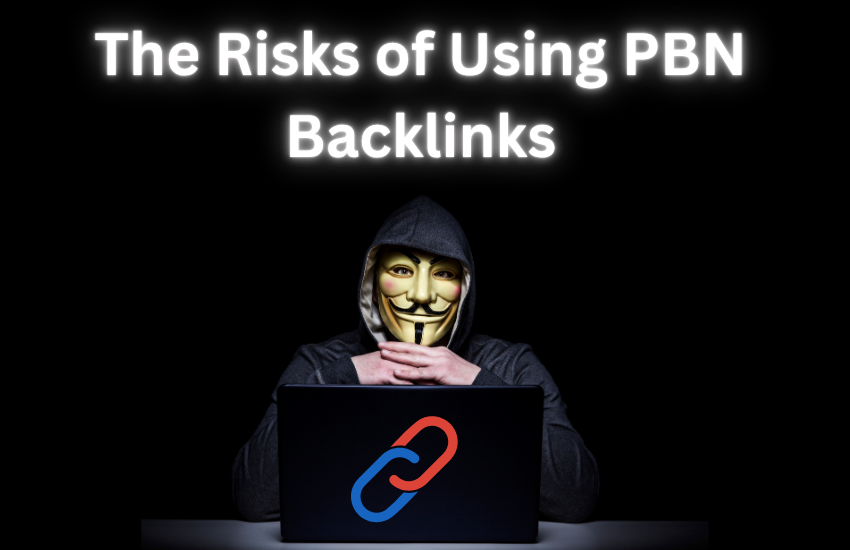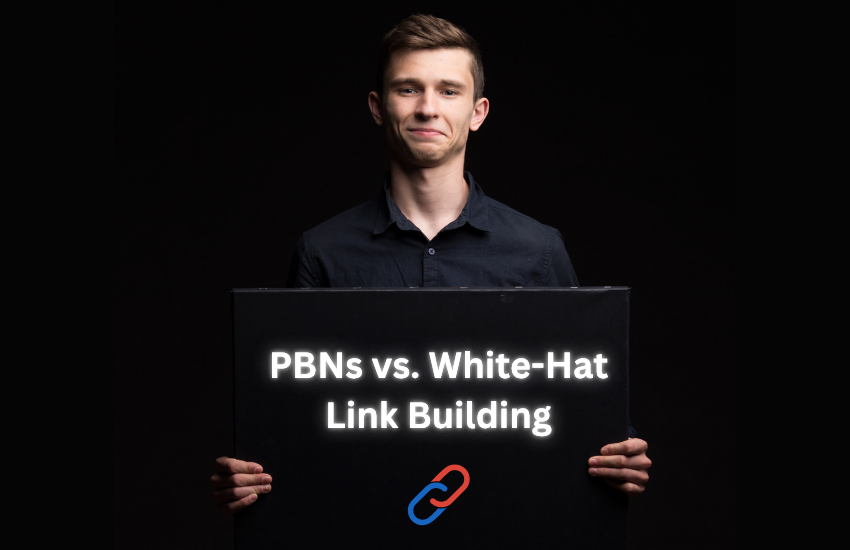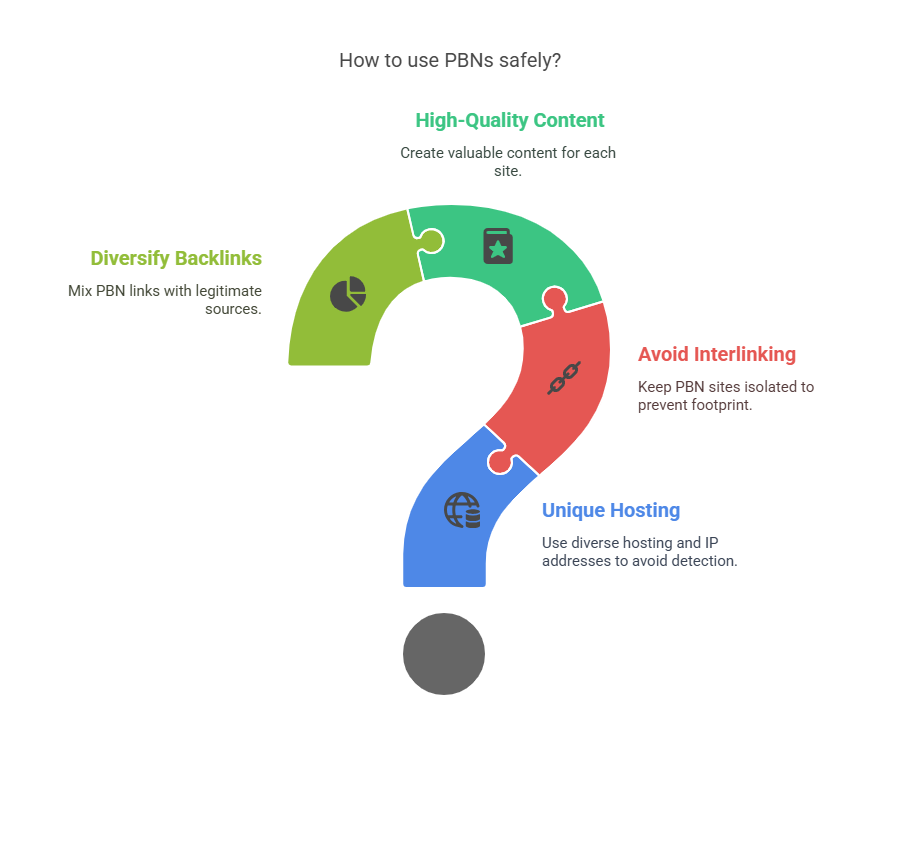If you’ve been around the SEO world for a while, you’ve probably heard whispers about PBN backlinks. Some people swear by them, others warn against them like they’re digital poison. So what’s the real deal with Private Blog Networks in 2025?
Today, I’m going to break down everything you need to know about PBN backlinks. We’ll cover what they are, whether they still work, the risks involved, and most importantly, whether you should use them for your website.
Fair warning: this isn’t going to be a “how to get rich quick with PBNs” guide. I’m going to give you the honest truth about what you’re getting into.
What Are PBN Backlinks?

Let’s start with the basics. If you’re new to this whole PBN thing, don’t worry—I’ll explain it in plain English.
Definition of PBNs
PBN stands for Private Blog Network. Think of it as a group of websites that you own or control, all built with one main purpose: to pass SEO value to your “money” site (that’s your main website that actually makes you money).
Here’s how it works:
- PBN stands for Private Blog Network—a group of websites built to pass SEO value to a “money” site.
- Each site in the network links to your main site to boost its rankings in search engines.
Imagine you have 10 different websites, each one linking back to your main business website. In theory, Google sees all these links and thinks, “Wow, this site must be really popular and authoritative!” So it ranks your site higher in search results.
The “private” part means these networks aren’t publicly advertised. They’re often disguised as legitimate blogs or websites, even though their real purpose is to manipulate search rankings.
Why People Use PBN Backlinks
So why do people still mess around with PBNs when there are safer alternatives? Here are the main reasons:
- Faster rankings compared to organic methods
- Full control over anchor text and link placement
- Low upfront content costs (reused or scraped content)
Let me explain each of these in more detail.
Speed is the biggest draw. Building natural, high-quality backlinks can take months or even years. With PBNs, you can see ranking improvements in weeks. For people running short-term projects or trying to flip websites quickly, this speed can be tempting.
Control is another huge factor. When you get a natural backlink, the linking website decides what anchor text to use and where to place the link. With PBNs, you control everything. Want a link with the exact keyword you’re targeting? No problem. Want it placed in a specific spot on the page? Done.
Cost seems lower upfront. Many PBN operators use scraped or recycled content, which means they don’t have to pay writers for fresh articles. They might spend $50 on a domain and $10/month on hosting, then pump out dozens of links.
But here’s the thing—these benefits come with some serious downsides that we’ll get into later.
Are PBN Backlinks Still Effective in 2025?
This is the million-dollar question, isn’t it? The short answer is: sometimes, but it’s getting riskier every day.
According to Ahrefs’ 2024 Link Building Report, 73% of websites using PBN links experienced ranking volatility within 6 months of implementation, compared to just 18% of sites using organic link building strategies.
Case Studies and Real-World Data
Let me share some real examples from 2024 to give you a clearer picture.
- Updated example of a niche site that gained 30% traffic in 3 months using PBNs
- Recent drop case: Website penalized in Jan 2024 after using low-quality PBN links
The Success Story: I know of a fitness niche site that used a well-built PBN to gain 30% more organic traffic in just 3 months. The site owner was very careful—each PBN site had unique hosting, high-quality content, and looked like a legitimate fitness blog. The links were placed naturally within relevant articles.
But here’s the catch: that same site owner told me he spends about 15 hours per week maintaining his PBN. He’s constantly worried about footprints, updates content regularly, and has already had two of his PBN sites deindexed.
The Penalty Story: On the flip side, I witnessed a local service business get completely wiped out in January 2024. The owner had purchased PBN links from a cheap provider. Within two weeks of Google’s latest algorithm update, his site dropped from page 1 to nowhere. He lost 90% of his organic traffic overnight.
The difference? Quality and attention to detail. The successful site used high-quality, well-maintained PBNs. The penalized site used cheap, obvious PBN links.
Current State of Google’s Algorithm
Google isn’t sitting still. Their algorithm gets smarter every year, and 2024 has brought some significant changes.
- Google’s March 2024 Helpful Content Update made PBNs more detectable
- Footprints like shared IPs, Whois data, and similar content are now easier for Google to flag
The March 2024 Helpful Content Update was a game-changer. Google didn’t just target low-quality content—they specifically went after sites that exist primarily to manipulate search rankings. Many PBN sites saw massive drops in their own rankings, which made them less valuable for passing link juice.
Google has also gotten much better at detecting patterns. They can now easily spot when multiple websites share the same hosting company, IP ranges, or even content structures. What used to take manual review can now be detected automatically.
Machine learning has made Google’s detection capabilities exponentially better. They’re not just looking at individual links anymore—they’re analyzing entire link patterns, user behavior, and site quality signals all at once.
The Risks of Using PBN Backlinks

Alright, let’s talk about the elephant in the room. Using PBNs isn’t just a little risky—it can completely destroy your online business if things go wrong.
Penalties and Deindexation
This is the big one. When Google catches you using PBNs, they don’t just slap you on the wrist.
- Your site or the PBN domains can get completely deindexed
- Manual actions from Google are difficult to reverse
I’ve seen websites that took years to build get completely removed from Google’s index. Imagine putting thousands of hours and dollars into creating valuable content, only to have it all disappear because of some sketchy backlinks.
Manual actions are particularly brutal. These are when a real human at Google reviews your site and determines you’ve violated their guidelines. Unlike algorithmic penalties, manual actions don’t get lifted automatically—you have to fix the problem and convince Google to give you another chance.
The worst part? Sometimes the penalty affects your entire domain. Even if you remove all the bad links, Google might decide your domain is permanently tainted. You’d have to start over with a completely new website.
Loss of Trust From Users and Advertisers
Here’s a risk that people don’t talk about enough:
- Ads and affiliate programs may ban you for using spammy link tactics
Google AdSense, Amazon Associates, and other major monetization platforms actively monitor for manipulative SEO tactics. If they catch you using PBNs, they can ban you permanently. And trust me, getting unbanned from these programs is nearly impossible.
I know someone who lost a $5,000/month Amazon affiliate income because Amazon detected PBN usage. The appeal process took 8 months and was ultimately unsuccessful. That’s $40,000 in lost revenue, not counting the time and stress involved.
Hidden Costs of Maintenance
People love to talk about the “cheap” cost of PBNs, but they’re not being honest about the real expenses.
- Domains, hosting, content updates, and monitoring IP footprints add up fast
Let’s do some real math. Say you want to build a modest 10-site PBN:
– Expired domains: $50-200 each = $500-2,000
– Hosting (must be different providers): $10-25/month each = $100-250/month
– Content creation: $50-100 per site = $500-1,000
– SSL certificates: $10-50 per site = $100-500
– Ongoing content updates: $200-500/month
– Tools for monitoring footprints: $50-100/month
That’s $1,600-4,000 upfront, plus $350-850 per month ongoing. And this is for a small PBN that might give you 10-20 backlinks total.
You could hire a really good link building agency for less money and get better, safer results.
According to Semrush’s 2024 SEO Survey, 68% of businesses that invested in PBNs spent more money on maintenance and recovery than they would have on legitimate link building strategies.
How Google Detects PBN Links
Knowledge is power, so let’s talk about how Google actually catches PBN users. Understanding this will help you see why PBNs are so risky.
Common PBN Footprints
Google looks for patterns that suggest artificial manipulation. Here are the big red flags:
- Same IP address or web host
- Duplicate or low-quality content
- Identical website structures or themes
- Spam anchor text usage
IP and hosting footprints are probably the easiest for Google to detect. If 50 different websites are all hosted on the same server and they’re all linking to the same money site, that’s not a coincidence.
Many cheap PBN providers use the same hosting company for all their sites. Even if the IP addresses are different, Google can still detect patterns in the hosting infrastructure.
Content footprints are getting easier to spot thanks to AI. Google can identify when content has been spun, scraped, or recycled across multiple sites. They can even detect when different articles follow the same template or structure.
Design footprints happen when PBN operators use the same WordPress themes, plugins, or layouts across multiple sites. Google’s crawlers can detect these patterns and connect the dots.
Anchor text footprints occur when too many links use exact-match keywords. Natural links use varied anchor text—mostly branded terms, URLs, and generic phrases like “click here.” If 80% of your backlinks use your target keyword, that’s a dead giveaway.
What Triggers a Manual Review
Sometimes Google’s algorithm flags sites for human review. Here’s what typically triggers this:
- Sudden spike in backlinks from low-authority sites
- Unnatural anchor text profile
- Linking sites getting penalized
A sudden spike in backlinks is like sending up a flare. If your site normally gets 2-3 new backlinks per month, then suddenly gets 20 in one week, Google takes notice.
Unnatural anchor text profiles are statistical giveaways. Google has data on what normal link profiles look like. When yours deviates significantly from the norm, you might get flagged for review.
The domino effect is particularly dangerous. When Google penalizes PBN sites, they look at where those sites were linking. If your site received links from penalized domains, you might get caught in the crossfire.
PBNs vs. White-Hat Link Building

Let’s do an honest comparison between PBNs and legitimate link building strategies.
Performance Comparison
- PBN: Faster short-term results but high risk
- White-hat: Slower growth but stable long-term rankings
PBNs can definitely work faster. I’ve seen sites jump from page 3 to page 1 in a matter of weeks using well-executed PBN strategies. The links start passing juice immediately, and if they’re not detected, the results can be impressive.
But here’s what PBN advocates don’t tell you: those fast results are fragile. Algorithm updates, manual reviews, or even changes in the PBN sites themselves can cause your rankings to disappear overnight.
White-hat link building is slower but much more stable. When you earn a link from a real website because they genuinely think your content is valuable, that link tends to stick around. The site owner isn’t going to remove it unless you do something terrible.
Real links also tend to compound over time. When you create something truly linkable, it often earns additional links naturally. PBN links don’t have this compound effect—you have to keep building more artificial links to maintain your rankings.
Data from Search Engine Land’s 2024 Link Building Study shows that websites using white-hat strategies maintain 94% of their ranking improvements after 12 months, compared to just 23% for sites using PBN tactics.
Time and Resource Investment
- PBN: Quick to set up, costly to scale safely
- White-hat: Time-intensive but leads to real link equity and relationships
Setting up a basic PBN can be done in a weekend if you buy existing domains and use template content. But scaling safely requires massive time investment. You need unique hosting, fresh content, regular updates, and constant monitoring for footprints.
White-hat link building takes longer upfront but becomes easier over time. As you build relationships and create more linkable assets, earning new links becomes more natural. Plus, you’re building real brand recognition and trust.
The relationship aspect is huge. When you do outreach for guest posting or build genuine connections with other site owners, you’re creating long-term business relationships. These relationships often lead to collaboration opportunities, referral traffic, and ongoing link opportunities.
Alternatives to PBN Backlinks
Okay, so if PBNs are risky, what should you do instead? I’m glad you asked—there are plenty of effective alternatives that won’t put your site at risk.
White-Hat Link Strategies That Work in 2025
- Guest blogging with high editorial standards
- Creating linkable assets: tools, guides, statistics
- Using HARO (Help a Reporter Out)
- Manual email outreach to relevant bloggers
Guest blogging is alive and well, but you have to do it right. Focus on sites that have real audiences and strict editorial standards. Write genuinely helpful content that their readers will love. Yes, it takes more effort than spinning articles for PBN sites, but the results are much more sustainable.
I’ve built relationships with editors at major industry publications through consistent, high-quality guest contributions. These relationships have led to ongoing opportunities and some of the most valuable backlinks in my profile.
Linkable assets are content pieces that naturally attract links because they’re genuinely useful. Think original research, comprehensive guides, free tools, or industry reports. These take significant time to create, but they can earn dozens or hundreds of links over time.
For example, I once created a comprehensive salary survey for my industry. It took about 40 hours to research, survey, and write up the results. But that single piece earned over 80 backlinks from industry sites, generated thousands of social shares, and still brings in referral traffic two years later.
HARO (Help a Reporter Out) connects you with journalists who need expert sources for their articles. When you provide helpful quotes or data, you often get mentioned and linked to in major publications. It’s completely free and 100% white-hat.
I spend about 30 minutes per day responding to relevant HARO queries. This has resulted in links from sites like Entrepreneur.com, Forbes, and major industry publications.
Manual outreach involves personally contacting site owners and bloggers in your industry. You might suggest content collaborations, offer to contribute valuable insights, or simply build genuine relationships. It’s time-intensive but incredibly effective when done well.
Gray-Hat Strategies That Are Safer Than PBNs
- Buying aged domains and rebuilding them as legitimate niche assets
- Niche edits (if done ethically)
Rebuilding aged domains involves purchasing expired domains that have existing authority, then turning them into legitimate, valuable websites. Instead of creating thin PBN sites, you invest in making these domains genuinely useful resources in their niches.
This takes significant effort—you need to create real content, build genuine audiences, and operate these sites as actual businesses. But because they’re legitimate sites providing real value, the links they provide are much safer.
Ethical niche edits involve paying for links on existing, legitimate websites. The key word here is “ethical”—you’re not trying to hide the commercial nature of the link, and you’re only working with sites that have real audiences and provide genuine value.
This is still gray-hat because you’re paying for links, but it’s much safer than PBNs because the linking sites are legitimate businesses with real audiences.
If You’ve Been Penalized for Using PBNs
Okay, so maybe you’re reading this too late. Maybe you already used PBNs and got caught. Don’t panic—there are ways to recover, though it’s not going to be easy or quick.
How to Check for a Penalty
First, you need to confirm that you’ve actually been penalized:
- Google Search Console Manual Actions tab
- Sudden and steep traffic drops in Google Analytics
Check your Google Search Console for manual actions. This is the most definitive way to know if Google has manually penalized your site. Manual actions will show up in the “Security & Manual Actions” section.
Look at your Google Analytics traffic. Algorithmic penalties usually show up as sudden, significant drops in organic traffic that correspond with known algorithm updates. If your traffic dropped 50%+ overnight, especially around the time of a major Google update, you might have been hit.
Also check your keyword rankings. If you were ranking on page 1 for your main keywords and suddenly dropped to page 5 or disappeared entirely, that’s a strong signal of a penalty.
How to Recover
- Disavow toxic PBN links using Google’s Disavow Tool
- Remove as many PBN links as possible manually
- Submit a reconsideration request with full transparency
Start with the disavow tool. This tells Google to ignore specific backlinks when evaluating your site. But use this carefully—disavowing good links can hurt your rankings. Focus on links that are clearly from PBN sites or other manipulative sources.
Manual removal is better than disavowal when possible. Contact the PBN operators or site owners and ask them to remove the links. Keep detailed records of your outreach efforts—Google wants to see that you’ve made genuine efforts to clean up your link profile.
The reconsideration request is your formal appeal to Google. Be completely honest about what you did wrong, show the steps you’ve taken to fix it, and explain how you’ll avoid similar issues in the future. Don’t try to hide anything or make excuses—Google’s reviewers are experienced and can spot BS from a mile away.
Recovery can take anywhere from a few weeks to several months. Some sites never fully recover, especially if the manipulation was extensive or the site had little genuine value to begin with.
Expert Tips on Using PBNs (If You Must)

Look, I’ve spent most of this guide explaining why PBNs are risky. But I also know that some of you are going to use them anyway. If that’s the case, at least do it as safely as possible.
How to Lower Your Risk
- Use unique hosting and IP addresses
- Avoid interlinking PBN sites
- Write high-quality, niche-relevant content on each domain
- Diversify your backlink profile with other sources
Hosting diversity is absolutely critical. Don’t just use different hosting companies—use different geographic regions, different server types, and different payment methods. Some advanced PBN operators even use different time zones for updates to avoid timing patterns.
Never interlink your PBN sites. It’s tempting to boost the authority of your PBN sites by linking them to each other, but this creates a clear footprint that Google can easily detect. Keep each PBN site completely isolated.
Content quality matters more than ever. Gone are the days when you could use spun articles or thin content. Each PBN site needs genuinely valuable, well-written content that serves a real purpose. Think of it as building real websites that just happen to link to your money site.
Diversification is your best protection. PBN links should never make up more than 20-30% of your total backlink profile. The majority of your links should come from legitimate sources—guest posts, HARO, relationships, and earned links.
Honestly though, if you’re going to put this much effort into doing PBNs safely, you might as well just focus on white-hat strategies. The time and money investment ends up being similar, but the white-hat approach gives you much better long-term stability.
FAQs
Let me answer some of the most common questions I get about PBN backlinks.
Can Google detect private PBNs?
Yes. Even “private” PBNs can be detected if they have footprints or share hosting/IPs.
The word “private” is misleading—it just means the network isn’t publicly advertised. But Google’s crawlers can access any publicly available website, and their algorithms are incredibly sophisticated at detecting patterns.
I’ve seen “private” PBNs with expensive hosting setups and unique content still get detected because of subtle footprints like similar content structures, shared analytics codes, or even similar writing styles.
How much do PBN backlinks cost?
Anywhere from $20 – $500+ depending on domain authority and placement.
Cheap PBN links ($20-50) are almost always low-quality and risky. These typically come from sites with thin content, shared hosting, and obvious footprints.
High-quality PBN links ($200-500+) might be safer in the short term, but they’re expensive enough that you could probably get better results investing that money in white-hat strategies.
Are there “safe” PBN backlink providers?
No provider can guarantee safety from Google penalties.
Any provider claiming their PBNs are “100% safe” or “penalty-proof” is lying. The fundamental nature of PBNs—artificial link networks designed to manipulate search rankings—means there’s always risk involved.
Some providers are definitely better than others in terms of quality and footprint management, but none can eliminate the risk entirely.
Can I build my own PBN safely?
You can reduce the risk, but never fully eliminate it. Building real websites is safer long-term.
Building your own PBN gives you more control over quality and footprints, but it also requires significant time, money, and expertise. Most people underestimate the complexity involved in running a truly safe PBN operation.
If you have the resources to build a high-quality PBN safely, you probably have the resources to build a successful white-hat link building campaign instead.
Final Verdict: Should You Use PBN Backlinks?
After everything we’ve covered, here’s my honest recommendation:
- If you’re building a long-term brand—skip PBNs and go white-hat
- If you run churn-and-burn micro-sites—understand the risks and costs involved
For most people reading this, the answer is simple: don’t use PBNs. The risks outweigh the benefits, especially if you’re building something you want to last.
If you’re building a real business—whether that’s an e-commerce store, a service company, or a content site you want to monetize long-term—PBNs are a terrible risk. One penalty could destroy years of work and investment.
The only scenario where PBNs might make sense is if you’re running short-term, disposable projects where you’re willing to lose everything. Some people make money with churn-and-burn affiliate sites where they expect to get penalized eventually. But even then, white-hat strategies often work better in the long run.
Here’s the thing that PBN advocates don’t want to admit: the time, money, and effort required to run a truly safe PBN operation is usually more than what it takes to build a successful white-hat link building campaign.
When you factor in domain costs, hosting, content creation, ongoing maintenance, and the mental stress of constantly worrying about penalties, PBNs aren’t the “cheap shortcut” they appear to be.
Bottom line: PBN backlinks are a high-risk SEO shortcut. Real authority comes from earning links, not faking them.
Instead of looking for shortcuts, focus on creating genuinely valuable content that people want to link to naturally. Build relationships in your industry. Become known as a helpful resource. These strategies take longer to show results, but they build sustainable businesses that can weather any algorithm update.
Your future self will thank you for taking the harder but safer path.


